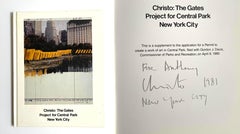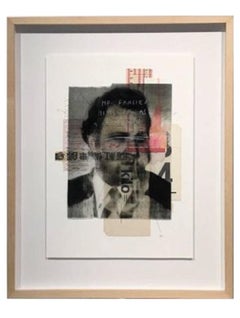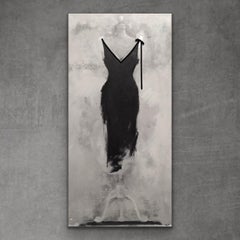Pencil More Art
2010s Contemporary Pencil More Art
Canvas, Oil Pastel, Mixed Media, Acrylic, Pencil
1950s Other Art Style Pencil More Art
Fabric, Graphite, Watercolor
1980s Pop Art Pencil More Art
Mixed Media, Pencil, Offset, Board, Lithograph
2010s Pop Art Pencil More Art
Mixed Media, Graphite, Film, Acrylic, Archival Paper
2010s Contemporary Pencil More Art
Fabric, Textile, Canvas, Mixed Media, Acrylic, Pencil, Color Pencil
2010s Pop Art Pencil More Art
Wood, Oil Pastel, Mixed Media, Acrylic, Graphite
1970s Op Art Pencil More Art
Screen, Pencil
2010s Pencil More Art
Paper, Watercolor, Pencil
2010s Pop Art Pencil More Art
Cotton, Paper, Mixed Media, Graphite
2010s Pop Art Pencil More Art
Wood, Oil Pastel, Mixed Media, Acrylic, Graphite, Paper
2010s Contemporary Pencil More Art
Canvas, Acrylic, Pencil
1980s Realist Pencil More Art
Pastel, Ink, Mixed Media, Watercolor, Color Pencil
21st Century and Contemporary Contemporary Pencil More Art
Paper, Color Pencil
1950s Pop Art Pencil More Art
Paint, Paper, Pencil
1940s Pop Art Pencil More Art
Paint, Paper, Pen, Pencil
20th Century Pencil More Art
Charcoal, Pencil
2010s Pop Art Pencil More Art
Oil Pastel, Mixed Media, Acrylic, Graphite
2010s Pop Art Pencil More Art
Wood, Oil Pastel, Mixed Media, Acrylic, Graphite
2010s Pop Art Pencil More Art
Oil Pastel, Mixed Media, Acrylic, Graphite
2010s Contemporary Pencil More Art
Fabric, Textile, Canvas, Mixed Media, Acrylic, Pencil, Color Pencil
1990s Pop Art Pencil More Art
Paint, Paper, Pen, Pencil
1990s Pop Art Pencil More Art
Paint, Paper, Pencil
1990s Pop Art Pencil More Art
Paint, Paper, Pencil
Early 2000s Pop Art Pencil More Art
Paint, Paper, Pen, Pencil
2010s Pop Art Pencil More Art
Cotton, Mixed Media, Graphite, Paper
2010s Pop Art Pencil More Art
Cotton, Paper, Mixed Media, Graphite
2010s Contemporary Pencil More Art
Acrylic, Board, Pencil, Color Pencil
2010s Pop Art Pencil More Art
Oil Pastel, Mixed Media, Acrylic, Graphite
1940s Pop Art Pencil More Art
Paint, Paper, Pen, Pencil
2010s Contemporary Pencil More Art
Paper, Acrylic, Pencil, Color Pencil
2010s Contemporary Pencil More Art
Paper, Acrylic, Pencil, Color Pencil, Ink
2010s Contemporary Pencil More Art
Fabric, Textile, Canvas, Mixed Media, Acrylic, Pencil, Color Pencil
1990s Pop Art Pencil More Art
Paint, Paper, Pencil
2010s Abstract Pencil More Art
Canvas, Mixed Media, Acrylic, Pencil, Color Pencil
2010s Contemporary Pencil More Art
Acrylic, Pencil, Color Pencil
1970s Realist Pencil More Art
Pastel, Ink, Mixed Media, Watercolor, Color Pencil
2010s Pop Art Pencil More Art
Oil Pastel, Mixed Media, Acrylic, Graphite, Canvas
1960s Realist Pencil More Art
Pencil, Postcard, Pen
1990s Pop Art Pencil More Art
Paint, Paper, Pen, Pencil
2010s Contemporary Pencil More Art
Fabric, Canvas, Mixed Media, Acrylic, Pencil, Color Pencil
1930s Pop Art Pencil More Art
Paper, Pencil
Early 2000s Pop Art Pencil More Art
Paper, Pencil
1990s Pop Art Pencil More Art
Paint, Paper, Pencil
2010s Abstract Pencil More Art
Canvas, Acrylic, Pencil, Color Pencil, Mixed Media
2010s Contemporary Pencil More Art
Acrylic, Pencil, Color Pencil
1990s Pop Art Pencil More Art
Paint, Paper, Pencil
2010s Contemporary Pencil More Art
Canvas, Paper, Acrylic, Pencil, Color Pencil
2010s Contemporary Pencil More Art
Fabric, Mixed Media, Acrylic, Pencil, Color Pencil
2010s Contemporary Pencil More Art
Metal
1990s Pop Art Pencil More Art
Paper, Pencil
1970s Realist Pencil More Art
Pastel, Ink, Mixed Media, Watercolor, Color Pencil
2010s Contemporary Pencil More Art
Fabric, Textile, Canvas, Mixed Media, Acrylic, Pencil, Color Pencil
2010s Contemporary Pencil More Art
Fabric, Textile, Canvas, Mixed Media, Acrylic, Pencil, Color Pencil
1990s Pop Art Pencil More Art
Paint, Paper, Pencil
1990s Pop Art Pencil More Art
Paint, Paper, Pencil
2010s Contemporary Pencil More Art
Fabric, Paper, Acrylic, Pencil, Color Pencil
2010s Contemporary Pencil More Art
Canvas, Paper, Acrylic, Pencil, Color Pencil
2010s Contemporary Pencil More Art
Canvas, Paper, Acrylic, Pencil, Color Pencil
2010s Abstract Pencil More Art
Canvas, Acrylic, Pencil, Color Pencil
2010s Contemporary Pencil More Art
Canvas, Acrylic, Color Pencil, Pencil





